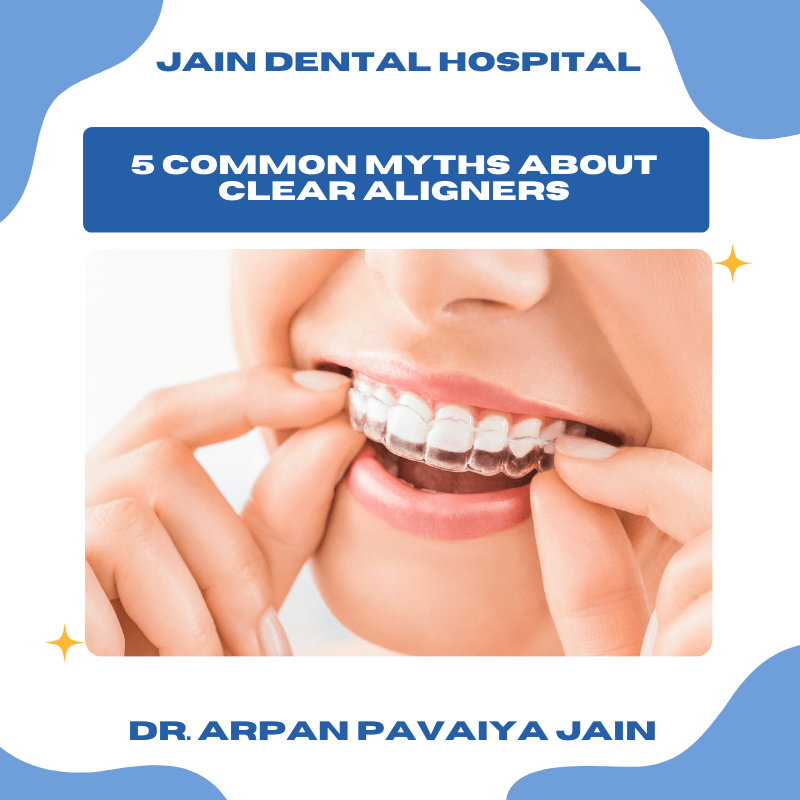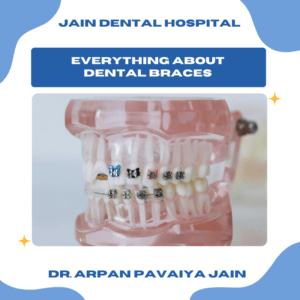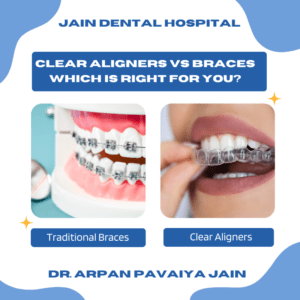5 Common Myths About Clear Aligners (Invisible Braces)
5 Common Myths About Clear Aligners – And the Truth Behind Them
The world of orthodontics has seen a seismic shift with the introduction of clear aligners. These transparent or invisible braces have made teeth straightening less about aesthetic inconvenience and more about comfort and efficiency.
Yet, despite their growing popularity, myths associated with clear aligners still persists. It’s crucial to debunk these misconceptions so that potential users, from orthodontic patients to beauty enthusiasts, can make informed decisions about their dental health.
In this comprehensive guide, we’ll uncover the truth behind the five most common myths associated with clear aligners, providing clarity for everyone—from professionals considering a smile makeover to parents weighing options for their teenagers.
Myth 1: Clear Aligners Are Only Suitable for Simple Cases
A common misconception is that clear aligners can only handle minor dental issues. Many believe these orthodontic tools are limited in their capabilities, suitable only for slight misalignments and are not for complex problems. However, this is completely untrue.
Thanks to technological advancements, clear aligners have evolved dramatically. They’re now capable of addressing wide array of orthodontic issues, including some complex cases.
With precision engineering and 3D imaging, clear aligners can tailor-fit treatments for conditions such as overcrowding and bite issues like overbites or crossbites. These tailor-made solutions demonstrate that clear aligners are far more versatile than many assume.
Consider the variety of conditions that can be effectively treated with clear aligners. Whether it’s dealing with gaps between teeth, mild to moderate crowding, or even certain types of bite discrepancies, clear aligners are equipped to provide effective corrections.
This dispels the myth that they’re only for simple cases, showcasing their potential as a comprehensive orthodontic solution for varied challenges.
Myth 2: Clear Aligners Are Uncomfortable to Wear
One of the prevailing beliefs about clear aligners is that they cause significant discomfort. Some potential users worry they’ll experience the same level of pain as associated with traditional metal braces, fearing that the new aligners will feel intrusive and irritating.
However, a closer look reveals that clear aligners are designed with comfort in mind. Unlike traditional braces, which can have sharp edges and protruding brackets, clear aligners boast smooth edges and a snug custom fit. These features significantly enhance the overall comfort level, making the transition to wearing aligners much more bearable.
It’s also important to note that while some initial discomfort is expected—similar to any orthodontic treatment—it’s typically temporary. The sensation is often described as a mild pressure, indicative of the aligners working to shift teeth into their desired positions. Most users find that this discomfort diminishes quickly, allowing them to enjoy the benefits of clear aligners without ongoing pain or irritation.
Myth 3: Clear Aligners Take Longer Than Traditional Braces
Another prevalent myth is that clear aligners require a longer treatment period compared to traditional braces. This misconception perhaps rises from the idea that because aligners are less visible and seem more convenient, they must be slower in achieving results.
In reality, the duration of treatment with clear aligners can be comparable to, or even shorter than, that of traditional braces. The timeline largely depends on individual cases and how diligently patients adhere to wearing their aligners as prescribed. For many, sticking to the recommended 20-22 hours a day can expedite the process significantly.
Several factors influence treatment duration, including the complexity of the case and the patient’s compliance with wearing the aligners. Those who follow instructions closely often find that their treatment progresses smoothly and efficiently. This myth is quickly dispelled when one considers that the commitment to wearing clear aligners can lead to faster results, much to the delight of users eager for a swift transformation.
Myth 4: Clear Aligners Are More Expensive Than Traditional Braces
Cost is an important factor in choosing orthodontic treatment, and there’s a common perception that clear aligners are more expensive than traditional braces. This belief can deter potential users from exploring Clear aligners as a viable option.
While it’s true that the initial cost of clear aligners may seem higher, it’s essential to consider the pricing structures and payment options available for both treatments. Many providers offer flexible payment plans, making aligners more accessible than one might think. Additionally, insurance coverage often extends to clear aligners, further mitigating upfront expenses.
When comparing the overall costs, it’s crucial to factor in considerations such as retainers and aftercare. Clear aligners often come with fewer follow-up appointments and less maintenance, which can result in savings over time. By examining the bigger picture, the perceived cost discrepancy between clear aligners and traditional braces often narrows or even reverses, making aligners a cost-effective solution for many.
Myth 5: Clear Aligners Are Less Effective Than Fixed Braces
A primary concern for some is whether clear aligners deliver the same results as traditional fixed braces. Critics may raise concerns regarding the ability of these modern devices to achieve the desired results for more complex dental adjustments.
However, numerous studies and expert opinions have established the effectiveness of clear aligners in achieving impressive results. Aligners are meticulously designed to move teeth methodically, with progress monitored through digital imaging and regular check-ups. This precision ensures that the treatment aligns with the intended goals.
Professional expertise plays a significant role in successful treatment with clear aligners, just as with traditional braces. Orthodontists and dental professionals are well-trained to determine the best course of action for each patient, guiding them through a tailored treatment plan. The myth of ineffectiveness quickly fades when considering the wealth of evidence supporting the ability of clear aligners to achieve outstanding orthodontic results.
Conclusion
In debunking these myths, it’s clear that clear aligners represent a versatile, effective, and often more comfortable alternative to traditional braces. From the ability to address complex cases to the potential for efficient treatment timelines, clear aligners offer a modern solution that aligns with the needs of a diverse audience.
We encourage readers to consult with an orthodontist to explore their options and determine if clear aligners are suitable for their individual needs. By seeking professional guidance, you can gain a deeper understanding of what clear aligners can offer and make a well-informed decision about your orthodontic treatment.
Whether you’re a seasoned user of clear aligners or considering them for the first time, we invite you to share your experiences or questions about clear aligner treatments. Join the conversation and discover how these innovative devices can transform your smile and confidence.
Get the Facts About Clear Aligners!
Thinking about straightening your teeth with clear aligners? Don’t let myths hold you back! Jain Dental Hospital can help you separate fact from fiction.
Schedule a consultation today to discuss your smile goals and learn the truth about clear aligner treatment. Call us at +91-9582535204 or visit our website at www.jaindentistdelhi.com to book your appointment online. We look forward to seeing you smile!

Dr. Arpan Pavaiya Jain, Director of Jain Dental Hospital, Indirapuram, Ghaziabad is a renowned Prosthodontist and Implantologist with over 20 years of expertise in advanced dentistry. A graduate of the prestigious King George’s Medical College Lucknow, he has performed more than 20,000 successful dental implant procedures. Dr. Jain leads a team of skilled professionals, offering state-of-the-art treatments in dental implants, clear aligners, cosmetic dentistry, orthodontics, and more. Known for his personalized care and commitment to excellence, he has earned a reputation as a trusted dental expert in Indirapuram, Ghaziabad.





